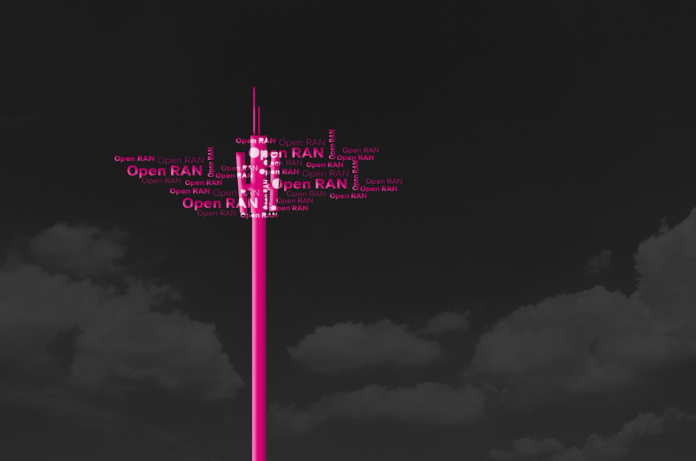Trial highlights integration challenges as well as future standardisation requirements for non-real time RAN Intelligent Controller tech
Deutsche Telekom has identified several areas where multi-vendor O-RAN networks need more standardisation network before RAN automation and optimisation tools reach true plug and play functionality.
The findings are part of a multi-vendor trial the telco did around programmable radio access networks that demonstrated the potential of a non-real time RAN Intelligent Controller (non-RT RIC) and third-party applications (rApp) to automate and optimise disaggregated RAN.
The RAN RIC is the software heart of Open RAN that’s responsible for controlling and optimising RAN functions behaviour. It also enables fast onboarding of third-party applications that automate and optimise RAN operations at scale.
The non-RT RIC is part of the service management and orchestration (SMO) framework, centrally deployed in a telco’s network. It enables greater-than-one-second control and policy guidance over the RAN elements and their resources through rApps.
It also supports AI/ML RAN capabilities and uses long-term network data, such as performance metrics as well as enrichment data from external applications to train and generate AI/ML-driven applications.
While the telco found that the adoption of the SMO, non-RT RIC and rApp framework looked promising – in particular, how it supports the decoupling of optimisation algorithm development, the supporting platform development and the system integration – multi-vendor framework presents integration challenges that must be addressed.
“With this PoC, we set out to assess the technical integration complexity of the components delivered by each party, the level of customisation required, to gauge the maturity of products and to identify potential future standardisation requirements,” said Deutsche Telekom VP head of network trials and integration lab Petr Ledl.
Challenges exposed in getting O-RAN to production
Deutsche Telekom’s trial found that despite the framework looking promising, technical and, more specifically, standards challenges will need to be solved before multi-vendor solutions for RAN network optimisation disaggregation make it out of the lab to production networks.
The telco found the production RAN automation framework based on SMO and non-RT RIC concept requires tight integration between those two. There is no standard interface between these two and therefore if provided by two vendors, there’s a real potential for duplication of functions.
In addition, non-RT RIC/rApp vendors provide their own dashboards and UIs meaning there is no clear picture of how these can be centrally integrated within the SMO framework. This means the ops team would end up needing multiple applications from various sources (rApp/non-RT RIC/SMO) to maintain and validate system performance.
Interface threat
Deutsche Telekom found the interface between rApps and non-RT RIC framework (R1) needs further standardisation if it is ever to be plug-and-play. If vendors choose their own path, there is a risk that the ecosystem will evolve towards custom rApps per non-RT RIC supplier, the telco said.
Telekom also found that O-RAN vendors still lack maturity in basic configuration management (CM) notification functionality. In addition, RAN optimisation algorithms (like rApps) require cell configuration information together with its topology/physical information and the telco believes there should be a standardised format for how this type of data is stored and exposed to rApps.
In a white paper describing the trial, Telekom concluded: “The vision of plug and play on the R1 interface is not yet achieved. Related standards must be further improved. Pre-integration of rApps and non-RT RIC products including certification must be strengthened by initiatives such as the i14y Open lab.”
It added: “The internal SMO architecture and the interfaces between all SMO building blocks must be defined by the respective Working Groups of the O-RAN Alliance. Open RAN MoU members’ understanding of how an internal SMO structure might look like can foster and accelerate related standardisation.”
The telco stated that given open RAN and traditional RAN will coexist soon in commercial networks, a similar coexistence needs to happen for RAN automation/optimisation tools.
“The RIC and rApps are key to programmability, automation, and optimisation in radio access networks. Taking the learnings from this successful trial, we will now continue the work with our ecosystem partners to accelerate non-RT RIC/rApp development towards production readiness,” said Ledl.
Trial setup
Working together with AirHop, Juniper Networks, VIAVI Solutions and VMware, the partners completed a RAN closed-loop optimisation proof of concept within Deutsche Telekom’s lab environment in a multi-vendor setup based on ONAP and O-RAN specifications.
Deutsche Telekom provided a self-developed SMO framework along with a non-RT RIC solution based on the O-RAN SC non-RT RIC. Juniper Networks and VMware integrated their non-RT RIC products into DT’s SMO framework.
AirHop integrated two rApps for physical cell identifier (PCI) optimisation and energy savings dynamic multi-carrier management (ESMC) with each non-RT RIC, while VIAVI provided its RIC tester to emulate the O1 interface.


